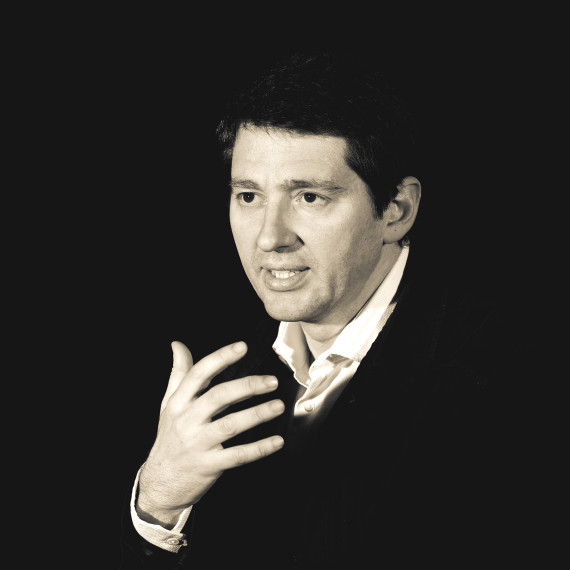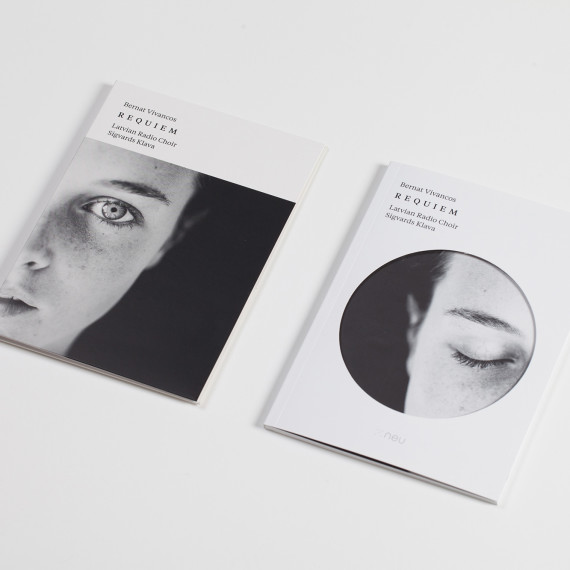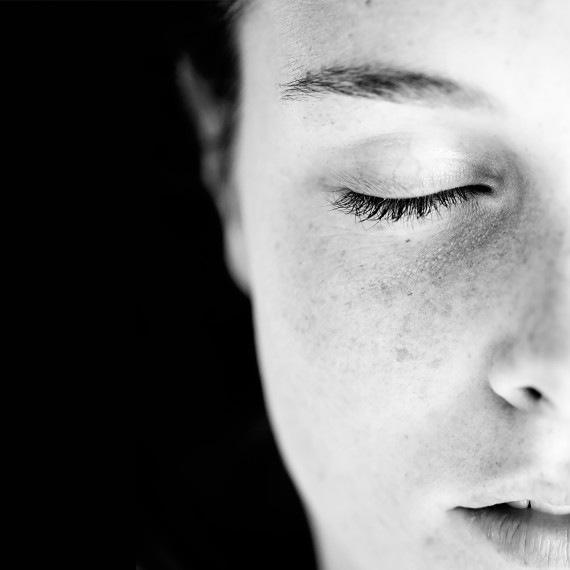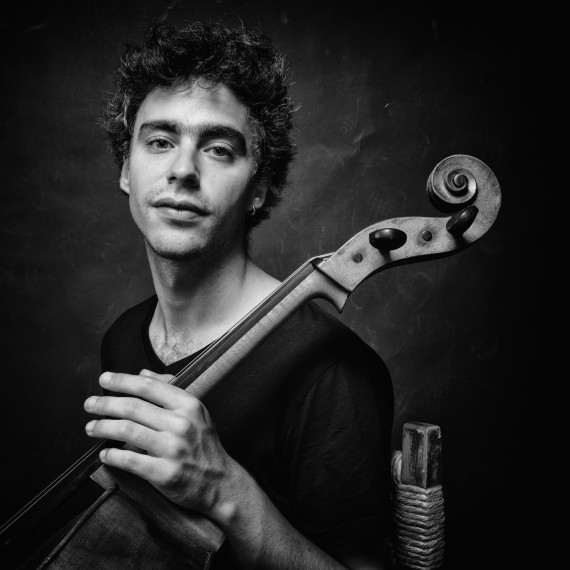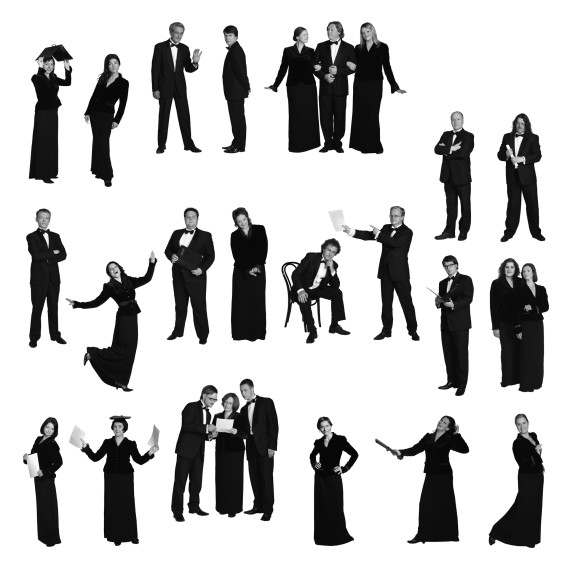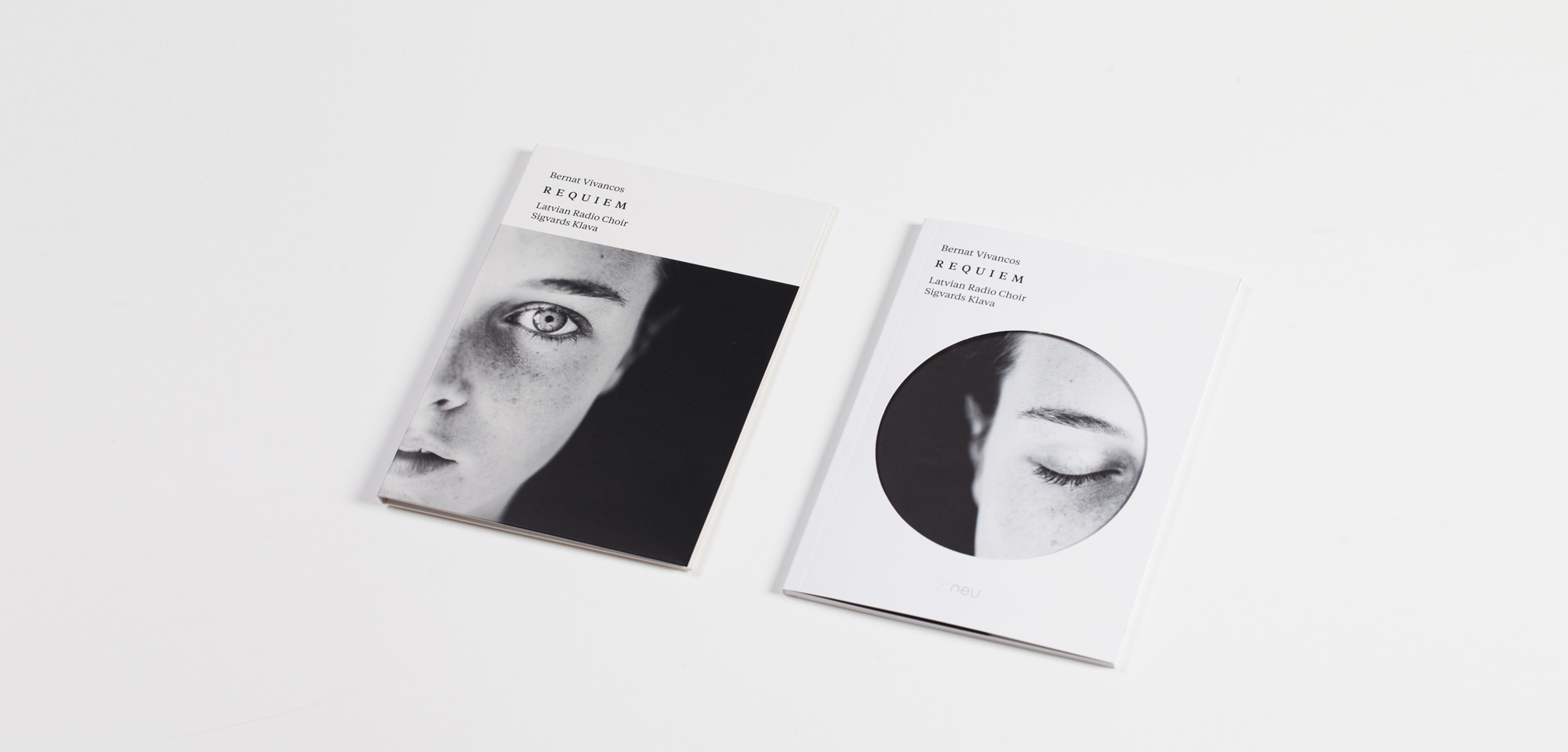
Latvian Radio Choir, Sigvards Klava
“A new musical Renaissance. His extraordinary talent and his profound spirituality are placed at the service of a process that is the invention of a new language which, in spite of its complexity and modernity, is capable of transmitting to us pure beauty and emotion.”
Jordi Savall
“The richly blended part-writing and superlative sound quality are constantly beguiling“
BBC Music Magazine
Requiem |
for mixed choir, soloists, cello soloist, cello quartet, accordion and percussion |
1. |
Aeternam |
09:25 |
2. |
Les Béatitudes |
22:00 |
3. |
L'Amour, le temps |
03:43 |
4. |
O Virgo Splendens |
12:55 |
5. |
Lasciatemi morire |
14:49 |
CD 2 |
6. |
Souffle ta bougie |
12:31 |
7. |
O Lux Beata |
10:58 |
8. |
Lux Perpetua |
11:31 |
Buy Album
2 CD + BOOK
Included formats
2 CD + Book (56 pag.) + Voucher Code to download:
HD FLAC Stereo · 24 bit 96 kHz
HD ALAC Stereo · 24 bit 96 kHz
HD FLAC Surround 5.1 · 24 bit 96 kHz
MP3 · 320 kbps
24,90€
Digital Album in CD Quality
Included formats
FLAC Stereo · 16 bit 44,1 kHz
ALAC Stereo · 16 bit 44,1 kHz
MP3 · 320 kbps
10,00€
Digital Album in HD Quality
Included formats
HD FLAC Stereo · 24 bit 96 kHz
HD ALAC Stereo · 24 bit 96 kHz
HD FLAC Surround 5.1 · 24 bit 96 kHz
MP3 · 320 kbps
14,00€
INTRODUCTION BY JORDI SAVALL
It is certainly unusual, or unexpected, that a musician specialised in the historical, pre-1800 repertoire should write about the creative work of a young composer of our own time. I discovered the music of Bernat Vivancos, firstly, thanks to the magnificent double CD “Blanc” with choral works performed by the Latvian Radio Choir, (given to me last year by my friend Lluís Vilamajó); and a few months ago, on 6th March to be exact, I was lucky enough to meet Vivancos personally and to hear some of his remarkable pieces on the occasion of the memorable concert in the Basilica of Santa Maria del Pi in Barcelona; a concert in homage to my friend, the much admired composer Arvo Pärt (who this year celebrated his eightieth birthday).
A new musical Rennaissance
Since earliest times, music has formed part of human life as a fundamental language; music is, in fact, the first language to which we are sensitive. We know that children, long before they understand the meaning of words, know what we want to say when we speak to them thanks to the inflection of our voice. We now know that, from the sixteenth week, a fetus reacts to musical stimulus with specific movements of face and tongue.
But in all these hundreds of thousands of years in which music has accompanied humanity, testimony remains of only a very small part of its history, since the invention of musical notation, with the definition of pitch and specific rhythms, only happened some one thousand three hundred years ago. Since then, composers have made the effort to leave manuscripts or scores with more or less concrete indications, from which it is possible to interpret what they imagined. But all these manuscripts and scores only achieve a real and living dimension at the moment that they are given specific form by voices or instruments.
This is the magical moment that enables us to perceive their full beauty and emotion, thanks to the performer’s talent. Thus, every musical performance is always a modern contemporary event, given that live music only exists at the very instant in which sound waves produced by the human voice or instruments give it audible form; it is this same limitation which, simultaneously, makes music the most human and the most spiritual of all the arts.
Music is, also, one of the most universal means of expression and communication, and the measure of its importance and of its significance is not determined according to the criteria of the evolution of language – in the sense of history and progress – but in terms of the degree of its expressive intensity, of its inner richness and humanity. Until the beginning of the nineteenth century it was thought that progress existed in the art of musical composition, and everyone believed that each new musical genius introduced improvements that turned the compositions of the established masters into irrelevant, archaic works. Therefore each new layer of modernity obscured the marvels of the old masters, causing them to be forgotten.
But all this changed in 1829, when a young conductor and composer of twenty years of age, called Felix Mendelssohn, performed, for the first time since the composer’s death, J. S. Bach’s St. Matthew Passion. The recognition that this work was a masterpiece in spite of its being more than a hundred years old, destroyed such prejudice and initiated the recovery of historical works, a task that still continues today, more energetically than ever.
Some years later, at the end of the nineteenth century, – at the same time that Ludwik Lejzer Zamenhof created and presented “esperanto” (1887), a new language intended to be universal and freed from national tongues-, in the world of musical creativity remarkable changes were also occurring, such as the abandonment of tonality (as well as the rejection of national styles) by Arnold Schoenberg and Anton Webern, or, in 1913, the impact of The Rite of Spring (Le Sacre du printemps) by Igor Stravinsky.
In the various schools that subsequently arose, and the more or less avant-garde tendencies which imposed themselves throughout the twentieth century (and the beginning of the twenty-first century), it can be claimed that one of the principle characteristics of the “cultured” music of our time has been the search for constant technical and formal innovation, often with the deliberate intention of extreme rupture. It seemed, therefore, that modernity could only be reached with the notion of a break with, and total rejection of, traditional influences and past languages, bearers of beauty and harmony.
Fortunately, thanks to the complex, historical process of discoveries and creation, of recovery and, finally, also, of recognition of the atemporal value of every work of art, we see that, today, a better knowledge of our thousand-year- old musical heritage can act as an element of inspiration and revitalisation in the creative practice of contemporary music; new composers of our own day are being widely incorporated into this veritable, new musical Renaissance that we are experiencing in the twenty-first century.
The innovative richness of the works by Bernat Vivancos are, I believe, the clearest and most striking proof of the vitality of this new musical Renaissance.
His extraordinary talent and his profound spirituality are placed at the service of a process that is the invention of a new language which, in spite of its complexity and modernity, is capable of transmitting to us pure beauty and emotion. Perhaps this is the great mystery of creativity in any true work of art, in one capable of achieving a perfect balance between technique and emotion, between beauty and spirituality, creating a web of new sounds which, becoming our own, will never cease to move us.
Jordi Savall
Requiem
To the memory of my father
Requiem, ‘rest’ in Latin, is a song of contemplation of life, death and transcendence. For the structure of this “Requiem”, I did not wish to follow the texts that have been incorporated into the Catholic liturgy in the last centuries. The idea is that this prayer should be new, without linking it to any previously established canon. It is intended to be a luminous meditation on transcendence, in which a selection of open, plural texts and reflections responds to a non-confessional vision of the end of human existence.
I have divided this “Requiem” into three parts. Preceded by the intimate, transparent “Aeternam” –a stripping away in a face to face dialogue with God–, the first part speaks of life on earth with reference to what I consider to be the three essential pillars of mankind: goodness, love and prayer. Goodness, in a slow savouring of the text of “the Beatitudes”; love, with a proverb which questions the time/love relation; and prayer, with a version of the ancient song to the Black Virgin of Montserrat, where we hear the request “that your faithful be chosen from among the blessed”. In this final piece, monks (male voices), angels (female voices) and Mother of God (soloist) seem eager to outdo each other in mutual praise…
The second part of the “Requiem”, the central part, is a song to death, based on the famous “Lasciatemi morire” by Claudio Monteverdi. Here, the song of solitude by solo cello and cello quartet expresses the pain of death, the face to face encounter with the proof of one’s inevitable end, and the putrefaction of the body – made earth, made matter, made ash.
A third and final part, whose aim is to be luminous and consoling, is itself divided into three parts. “Souffle ta bougie” speaks softly into the listener’s ear: the friend, the friend who is always there, invites us to blow out the candle in order to find the true path. Darkness guides us towards the light. Blessed light “O Lux Beata” which will lead us to “Lux Perpetua”, where, recalling the Aeternam of the beginning, voices are multiplied in a cloud of textures and magma, where light and doubt meld.
The melodic motif that appears throughout the Requiem is formed by three continuous descending tones. Though the Resurrection is generally expressed by an ascending movement, I wished to do the opposite here. It is not we who ascend to Heaven, but God who, in his goodness as out Father, forgives us and lowers his powerful arm to raise us up.
Bernat Vivancos
Here is the full score of Requiem. The document, in pdf format, includes explanatory notes by the composer and diagrams for placing the musicians for each piece, as well as percussion scores. This score, free from publishing rights but subject to authors copyright, is available for performance or study of all kinds.
DOWNLOAD FULL SCORE (PDF)
Requiem · Album Images
Bernat Vivancos, Latvian Radio Choir, Pau Codina, Requiem, Sigvards KlavaRequiem · Digital cover
Bernat Vivancos, Latvian Radio Choir, Pau Codina, Requiem, Sigvards KlavaPau Codina · Photos
Pau Codina, RequiemLatvian Radio Choir · Photos
Blanc, Latvian Radio Choir, Requiem“The richly blended part-writing and superlative sound quality are constantly beguiling. (…) The eight-part writing in the concluding “Lux Perpetua” glows and ripples in this excellent performance, the Latvian Radio Choir tirelessly sustaining pitch and tonal focus through lengthy musical paragraphs. The packaging deserves a mention -the basic CD issue includes a code enabling free download of Vivancos’s score and high resolution audio files of the performance, including a 5.1 surround sound version. It’s a model of what such things should be, yet too rarely are at present”. Terry Blain. Recording: 5 Stars
BBC Music Magazine
“This is a huge work, its eight movements stretching over 98 minutes. Most of it is scored for unaccompanied chorus, the stately tempi presumably making it terrifyingly difficult to perform well. Sigvards Klava’s Latvian Radio Choir cope magnificently – chords are voiced with supernatural confidence and their control, even in the longest sustained passages. There’s sporadic accompaniment from solo accordion, cello quartet and percussion, but the bulk of the piece is spare, uncluttered and harmonically direct. This isn’t a conventional Requiem setting, Vivancos’s texts mostly a selection of Biblical excerpts, terse proverbs and philosophical quotes. “Lasciatemi morire” is prefaced in the booklet by a graphic description of bodily decay, the unsettling accompaniment for cellos briefly taking us into a more dissonant, troubling world. The consolatory final movements pack a huge punch, and the work’s slow coda, a parade of slow tolling bells and sustained accordion notes, is a stunner. Make time for this slow burner of a work, and it will provide endless rewards. Handsomely recorded in St John’s Church, Riga, the production values are exceptionally good. It sounds superb in antideluvian stereo, and a code is included allowing a high definition download. The packaging is seductive, and you can even print off a 332-page study score from the label’s website.” Read more.
the art desk / Graham Rickson
Assistim a una troballa alquímica on s’assoleix una petita ‘obra d’art total’ i on convergeixen obra compositiva, voluntat expressiva, interpretació i edició discogràfica. (…) Ho hem de dir: és el millor disc de música contemporània aparegut en molts anys al nostre país”. Disc of the Month
440Clàssica
“This is timeless music that transcends fashionable idioms.” Read more.
On An Overgrown Path
“In the context of a requiem this is rather fascinating, the work becomes an infusion of both emotion and intellect, spirituality and science comingling in an act of expression that goes beyond mere grief into something altogether more complex, and which is all the more moving as a result. Its simpler passages speak with a soft directness that’s rather touching (albeit at times a little stylistically over-familiar), but Vivancos is at his best when the subject matter is less obvious and more thought-provoking. For example, in ‘Lasciatemi morire’ (based on Monteverdi), he draws on the cellos to juxtapose strange, bleak lines around the choir, in an exploration of death itself and subsequent physical decay. ‘Souffle ta bougie’, articulating lines from Denis Diderot concerning blowing out one’s only candle in order to find a truer path in total darkness, places the accordion both beside and inside the choral texture, acting to anticipate and provide a lingering trace of their presence. That being said, the Requiem finds its apogee of expressive power in the familiar Latin hymn ‘O Lux Beata’, turned here into an immense, coruscating outburst that sees the choir seemingly moving in and out of focus, the harmony in turn moving between clarity and dense cluster formations. While it lacks in some respects the experimental ambition heard on earlier album Blanc, Vivancos’ Requiem is nonetheless a convincing, moving and decidedly unusual take on an ancient and very personal act of closure.” Read more.
5AGAINST4.COM
“La composició de Vivancos és una insígnia esplèndida del renaixement actual d’una espiritualitat antiga que retorna la potència estètica de la música contemporània als temples.” Read More.
L’AVENÇ
“Requiem dimostra lo straordinario talento di Vivancos e dello strapotere del Lavtian Radio Choir (…). Questo doppio cd è di assoluto valore. Non è solo un percorso beato nelle profondità spettrali del canto, ma fornisce consigli, ricollega all’arte pura e proclama una tesi per la mai domata ricerca dell’essenza divina.” Read more.
PERCORSI MUSICALI
“Una música, la de Bernat Vivancos, que en las voces del Latvian Radio Choir se nos revela de una riqueza material y conceptual extraordinaria y de una belleza extrema. Con una mezcla indisoluble de opuestos que nos habla, desde lo más profundo, de la complejidad del mundo en el que nuestro espíritu nace, se desarrolla y, quizá, trasciende.” Read more.
CODALARIO
“Meravellós en tots els sentits (…) Tant per als qui tenen fe com per als qui només se senten apel·lats per la sensualitat auditiva, aquesta música és igual de potent des de totes les perspectives” Read more.
REVISTA MUSICAL CATALANA
“Una obra delicadísima, deliciosa, que hace tantas preguntas como las que deja abiertas la propia muerte.” Read more.
CULTURAL RESUENA
“Els devots de la música de Bernat Vivancos, una vegada més, ens sentim entusiasmats amb aquesta fecunda obra. (…) una música exquisida que provoca un plaer inefable, tota una evocació, vessant de la tendresa, de la compenetració profunda de les veus del cor letó i la música de Bernat Vivancos.” Read more.
SONOGRAMA MAGAZINE
“Un enregistrament memorable”
DIARI DE SABADELL
“Interpel·la la bellesa amb una estranya sensació d’immaterialitat, de trànsit sonor, i és dominat per un estatisme captivador que remet al cant gregorià, a la polifonia montserratina i a Arvo Pärt. (…) El Latvian Radio Choir, dirigit per Sigvards Klava, broda una interpretació memorable amb un ample registre estilístic, afinació incòlume, vibrato depurat fins a l’extrem i amb una solvència tècnica excepcional en col·locació, color, fiatto i cohesió. A més, exhibeix una gradació dinàmica i de textura que possibilita l’expansió cap a immensitats sonores i sfumatures perfectes que l’acrediten com una de les millors formacions del món.”
SERRA D’OR
Composer
Performers
Conductor
Soloists
Pau Codina, cello soloist – Lasciatemi morire
Iveta Romancane, soprano soloist – O Virgo Splendens
Ieva Ezeriete, soprano soloist – O Lux Beata
Arturs Noviks, accordion – Souffle ta bougie, Lux Perpetua
Ivo Kruskops, percussion – Souffle ta bougie, O Virgo Splendens, Lux Perpetua
Cello quartet
Eriks Kirsfelds, Darta Svetina, Madara Norbute,
Emma Aleksandra Bandeniece – Lasciatemi morire
Recorded at
St John’s Church
Riga, Latvia
September 2015
Music Production and Sound
N · Santi Barguñó, Hugo Romano Guimarães
Executive Production
Translations
Rebecca Simpson
Design
Photos
Produced by




